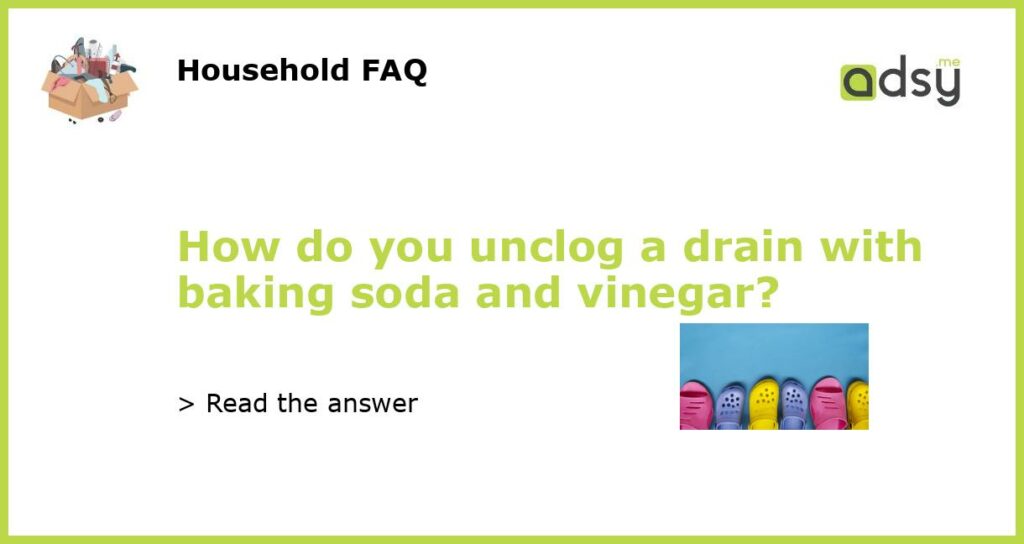What Causes a Clogged Drain?
Before learning how to unclog a drain with baking soda and vinegar, it is important to understand what causes a drain to clog in the first place. Hair, soap residue, food particles, and mineral deposits can all accumulate within a drain and create a blockage. Over time, the buildup can become so severe that water stops flowing altogether. Understanding the root cause of a clogged drain can help prevent future blockages from occurring.
Why Use Baking Soda and Vinegar?
Many people turn to chemical drain cleaners when faced with a clogged drain, but these harsh cleaners can damage pipes and harm the environment. Fortunately, baking soda and vinegar offer a natural and effective alternative. When combined, these two household staples create a chemical reaction that can break up stubborn clogs and clear pipes.
How to Unclog a Drain with Baking Soda and Vinegar
Unclogging a drain with baking soda and vinegar is a simple process that involves following a few steps:
- Remove any visible debris from the drain.
- Pour one cup of baking soda down the drain.
- Pour one cup of vinegar down the drain.
- Let the mixture fizz and bubble for 5-10 minutes.
- Flush the drain with hot water.
Tips for Preventing Future Clogs
While unclogging a drain with baking soda and vinegar is a quick fix for a clogged drain, it is important to take steps to prevent future blockages. Some tips for preventing clogs include:
- Use a drain cover or strainer to catch hair and debris.
- Run hot water through the drain after each use.
- Avoid pouring grease or oil down the drain.
- Flush the drain with baking soda and vinegar once a month to prevent buildup.
When to Call a Professional
If a clogged drain persists despite using baking soda and vinegar or if there are signs of a more serious issue such as a damaged pipe or sewer line blockage, it may be time to call a professional plumber. Attempting to fix a complex plumbing issue on your own can lead to further damage and costly repairs.






